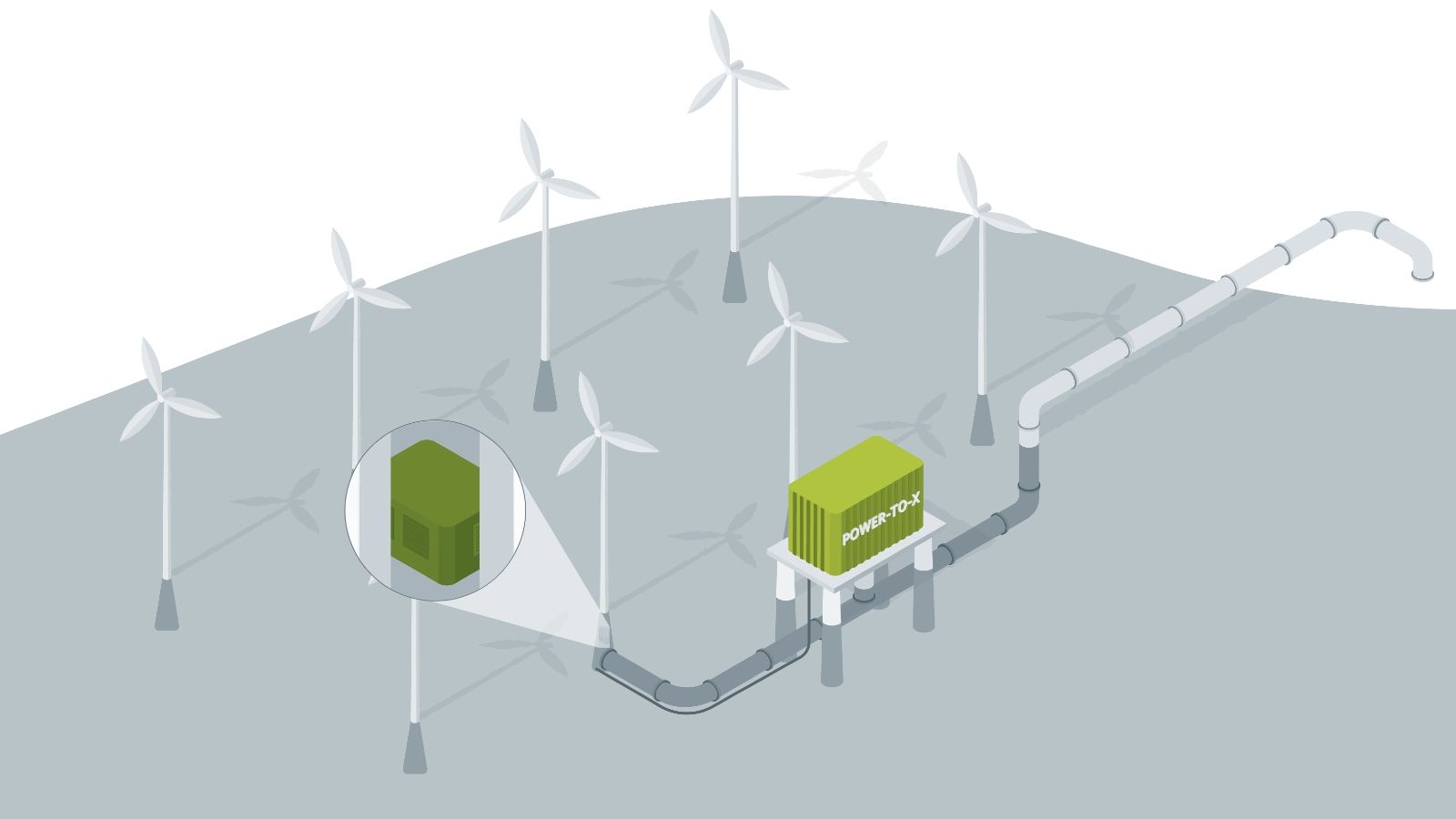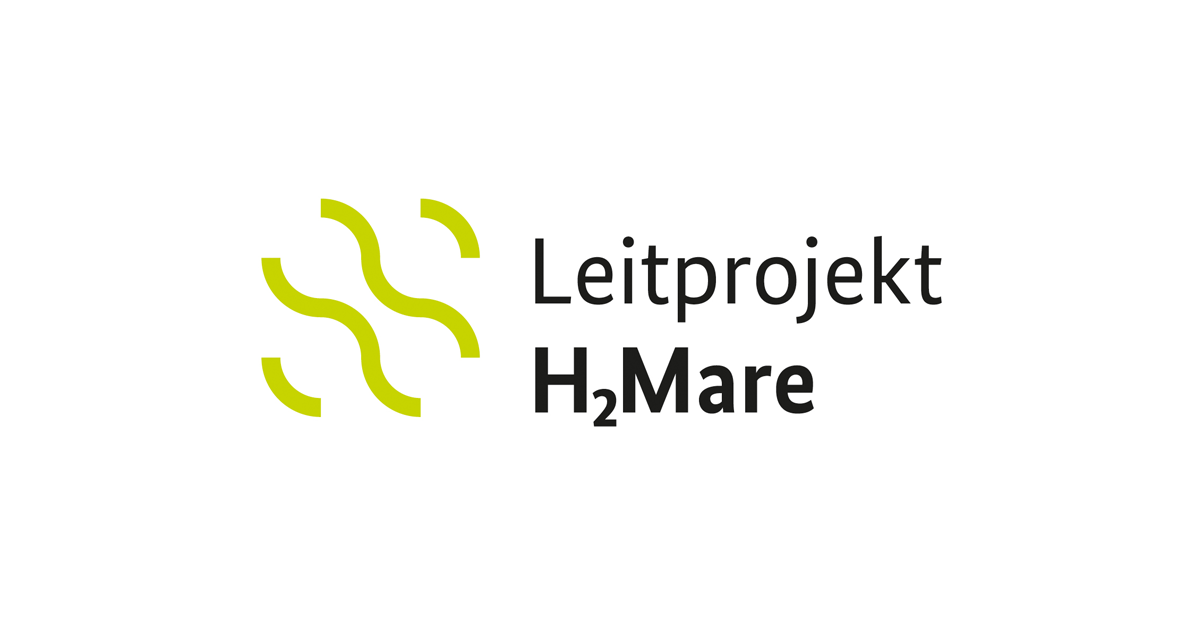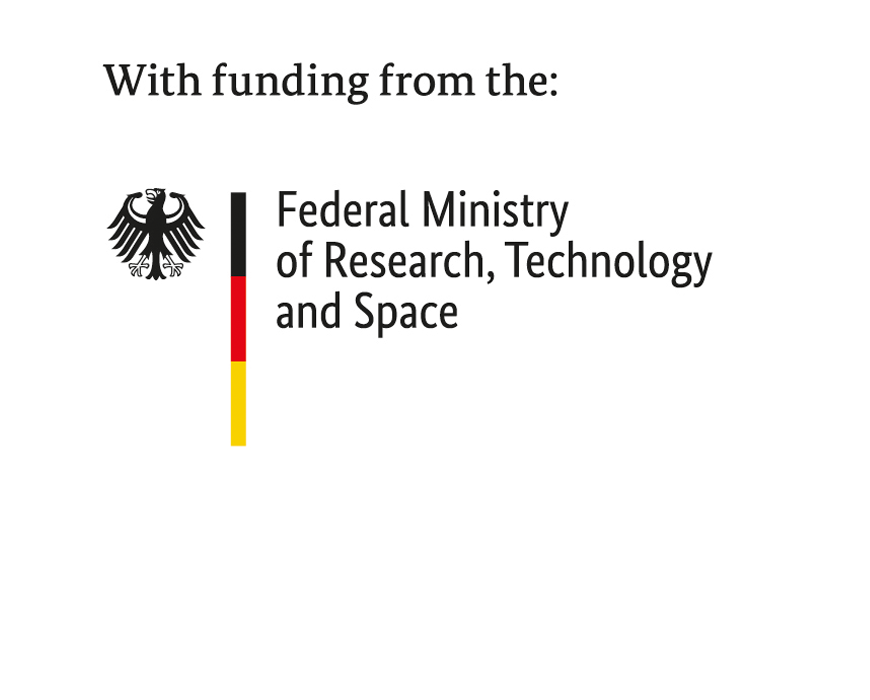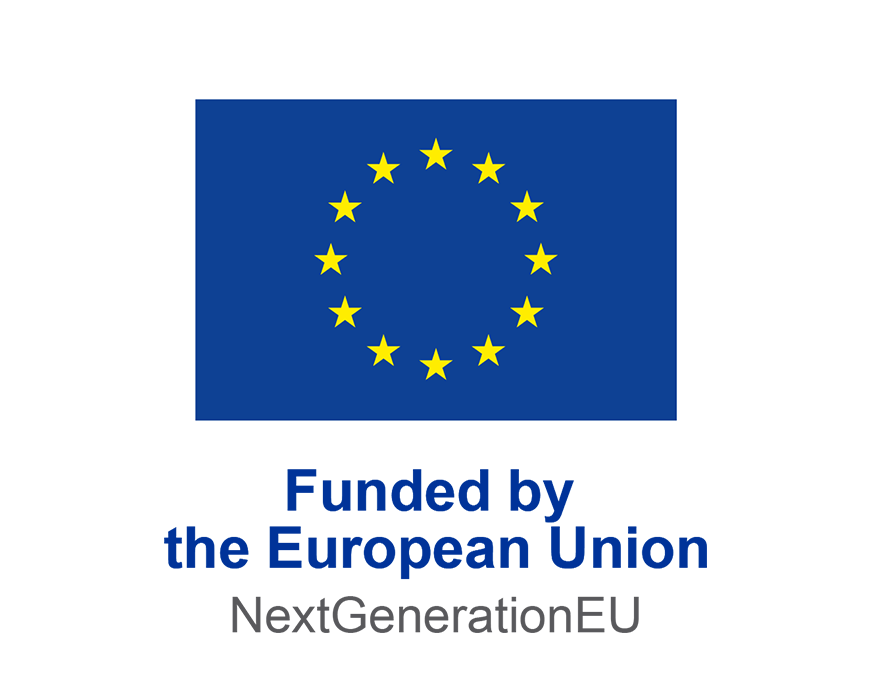At a glance
- integration of the electrolyzer into the offshore wind turbine
- no grid connection needed, which saves time and expenses
- production of P-to-X products, which can be stored compressed
- process development high-temperature electrolysis (HTE) and seawater electrolysis
- coupling of processes: redeploy the waste heat from the electrolysis efficiently to desalinate seawater
The challenge
Wind turbines at sea generate considerably more and also more regular energy than their onshore counterparts. The H2Mare hydrogen flagship project aims to tap this potential by utilizing renewable energy directly at sea to produce hydrogen and its downstream products.
In doing so, the partners integrate the electrolyzer directly into a wind turbine – and thereby make innovative technologies available for the direct offshore generation of green hydrogen. The direct coupling of the wind turbine and electrolyzer is expected to make hydrogen production more efficient, as the absence of a grid connection makes it possible to lower infrastructure costs considerably. In addition, the decoupling of electrolysis and grid unburdens grid structures. Yet another advantage of hydrogen production at sea is the fact that there are far larger potential areas available for the generation of wind energy than on land.
In light of the numerous advantages of production at sea, H2Mare is also working on solutions for employing green hydrogen to produce downstream products such as green methanol and green ammonia directly – in other words, offshore Power-to-X. For this to be successful, the partners also want to drive forward trendsetting technologies such as high-temperature electrolysis (HTE) and seawater electrolysis. Carbon dioxide and nitrogen are also required as input materials for the Power-to-X products – both of which are to be produced from the air and seawater.
Furthermore, answers should be found to open questions regarding safety and possible environmental impacts as well as life cycle analyses and technology evaluations.
The solution
Fraunhofer IWES’ contribution: One project goel is to redeploy the waste heat from the electrolysis efficiently to desalinate seawater. This purified water is required to produce hydrogen offshore. The result is improved efficiency in the offshore production of hydrogen. To achieve this goal, a test infrastructure is planned to expand the Hydrogen Lab Bremerhaven. The aim here is to investigate the effects of offshore conditions in the upscaling chain from cell to megawatt systems. Test profiles are currently under development which replicate the offshore production of hydrogen realistically.
Another challenge is to simulate the complete chain from wind energy utilization to energy generation, right up to hydrogen production, which is done by combining existing models to form a complete system model.
An economic analysis of the self-sufficient hydrogen production with directly coupled wind turbines employing PEM water electrolysis in a megawatt system will also be performed. Furthermore, the optimal technical integration of the complete system, including the control procedures, will be considered. The PEM electrolysis will be further developed with a focus on offshore conditions, including the investigation of materials and degradation.
More information: BMFTR Wasserstoff-Leitprojekte: H2Mare





